Racial Inequality in the Distribution of COVID-19 Cases and Deaths in Chicago
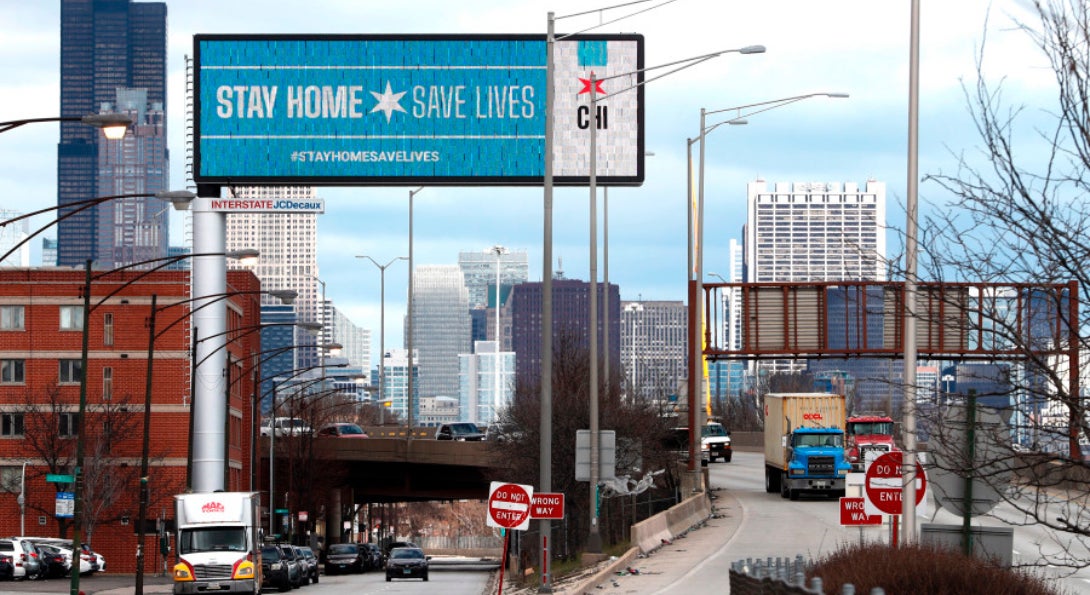
As more detailed demographic and spatial data on the Covid-19 confirmed cases and deaths are available, it has become extremely apparent that African American communities on the South and West side of Chicago are disproportionately affected by the pandemic. News media reports local and national trends of racial disparities in the effects of COVID-19.
Confirmed cases
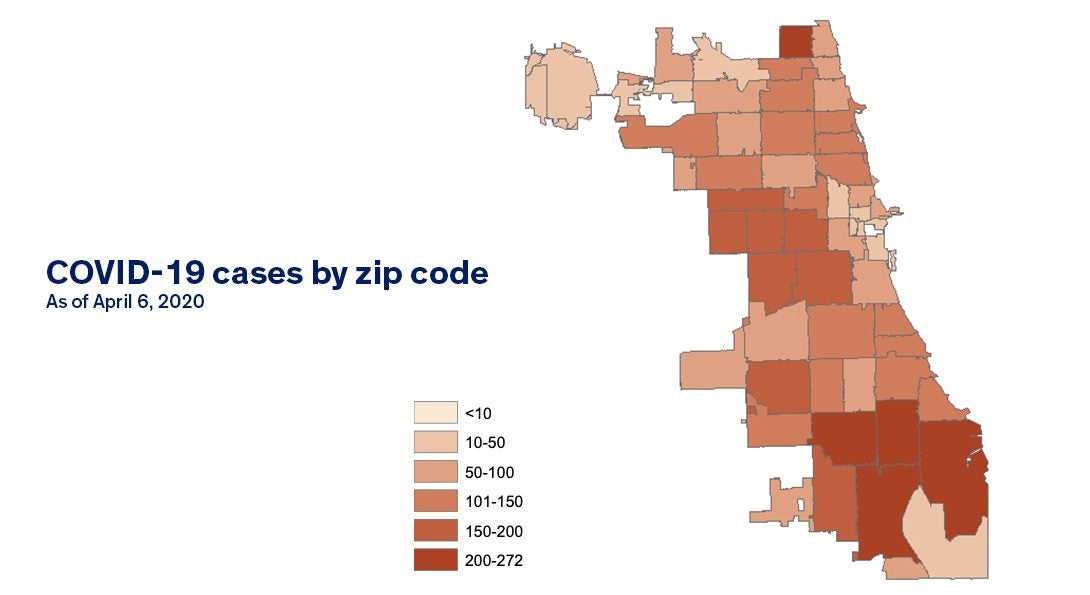
In Chicago, the number of confirmed cases are clustered on the south and west sides, which are predominantly African American communities. The Illinois Department of Public Health currently reports confirmed COVID-19 cases by zip code.
Distribution of deaths
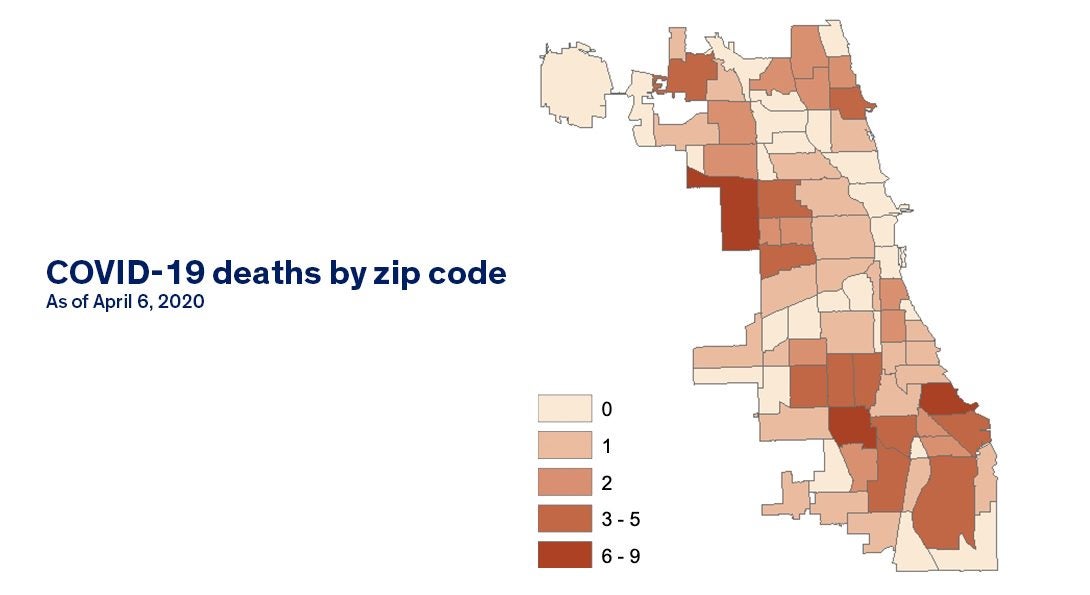
But the distribution of the COVID-19 related deaths is even more starkly clustered in predominantly African American communities (see the map below). Data on deaths is reported by the Cook County Medical Examiner’s office.
Risk Factors
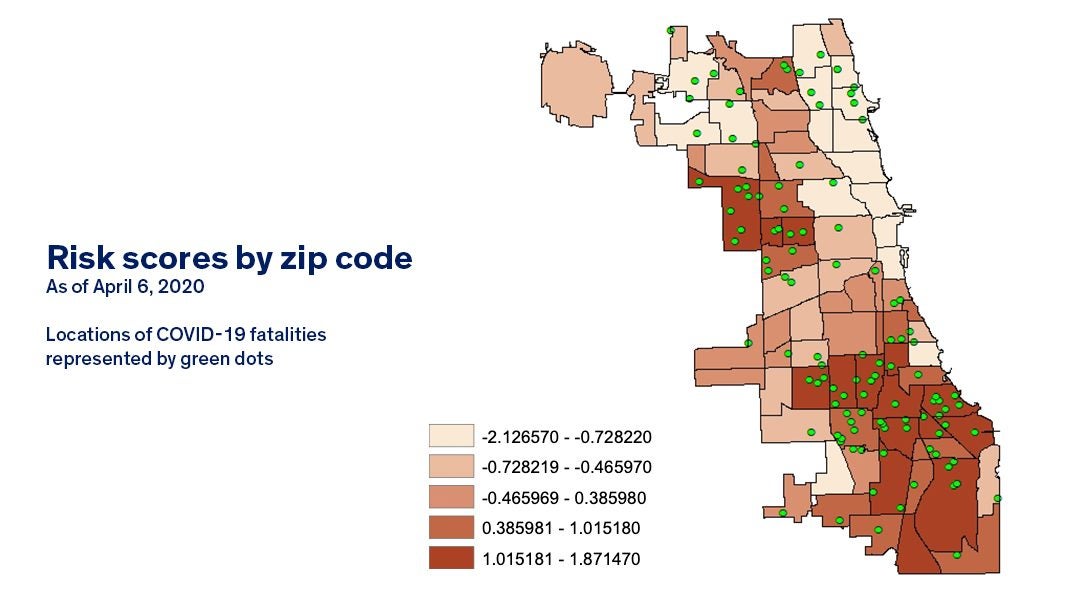
One of the reasons for such racial disparities is due to the fact that African American communities are disproportionately affected by multiple chronic diseases before the COVID-19 pandemic. Here, I created a risk factor score for the 77 Chicago Community Areas. The risk factor score includes the rates of heart-related death, stroke deaths, asthma, hypertension, diabetes, obesity and smoking. I utilized data from the Chicago Health Atlas.
This map shows the distribution of the risk factor score and COVID-19 deaths recorded by the Cook County Medical Examiner’s office, represented by green dots.
Social Vulnerability Index
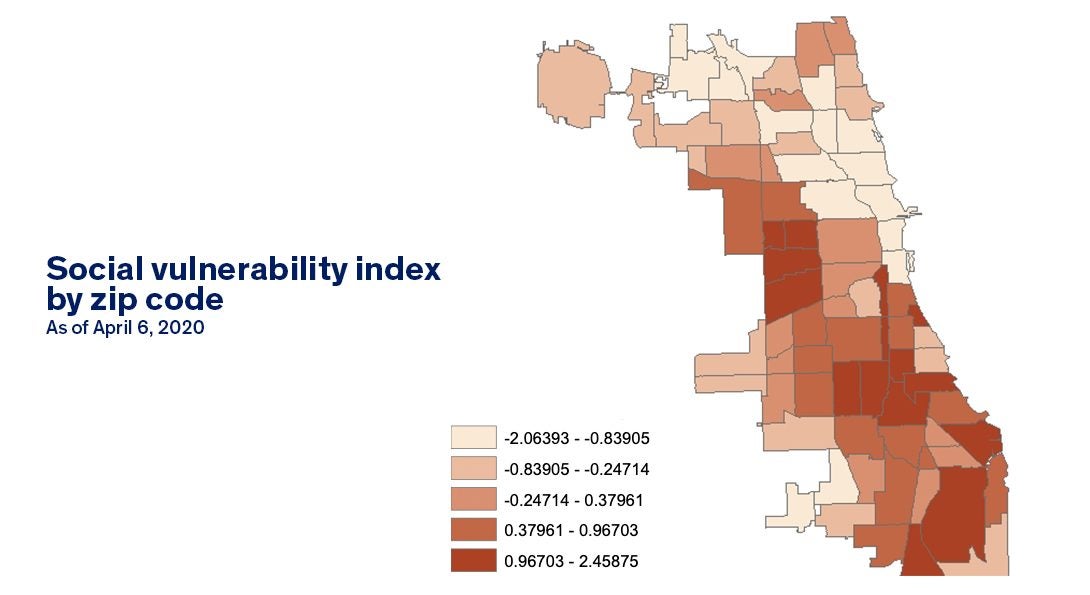
Fundamental social inequalities, including economic disadvantage, racial discrimination and spatial exclusion have dismantled community capacity, and residents in highly segregated, disfranchised neighborhoods are exposed to prolonged social stress. These social factors result in health disparities we see in cities like Chicago.
To visualize such social vulnerability, I created a social vulnerability index using the US Census’s American Community Survey five-year estimates between 2014-2018, including: percent of residents living in poverty, percent or residents with less than a high school education, percent of households headed by a female, median household income and employment ratios.
The maps show the south and west sides of Chicago communities experience greater social vulnerability before COVID-19. Increased social vulnerability is associated with health inequality outcomes. And together, existing structural vulnerability and health risks produce the current racial inequality in COVID-19 outcomes.
Disasters, such as this current event, often reveal racial inequality and health disparities embedded in the social structure.
About the author
Sage Kim, PhD, is an associate professor of health policy and administration at the University of Illinois at Chicago (UIC) School of Public Health. Prior to joining the school of Public Health, Sage Kim was a postdoctoral fellow with the Centers for Disease Control and Prevention Public Health Research Fellowship. Kim’s research focuses on the effects of incarceration, health disparities and population health. Her work has appeared in such publications as the Journal of Urban Health, Infection Control and Hospital Epidemiology, Women’s Studies International Forum, and Social Science and Medicine, among others.